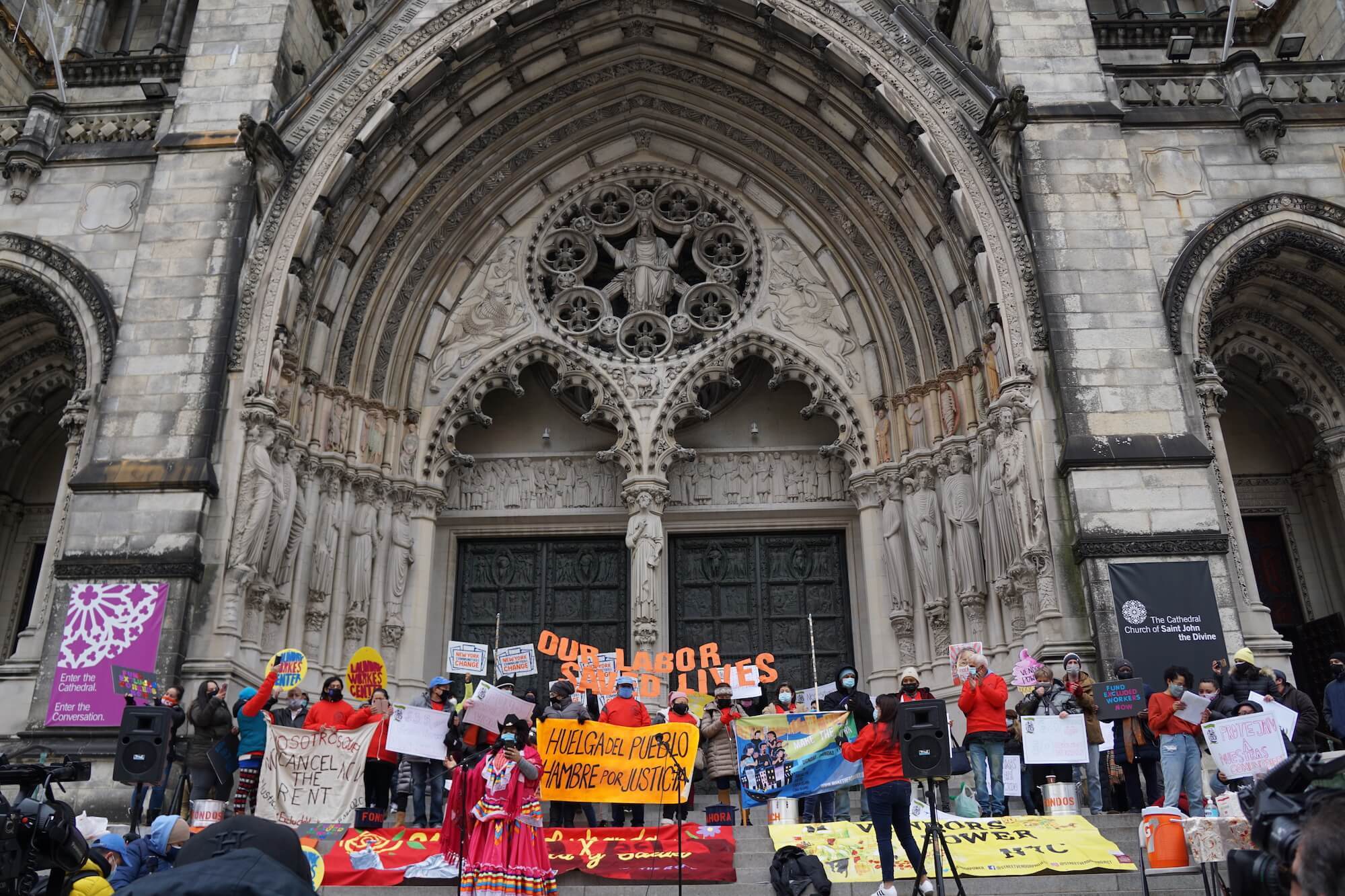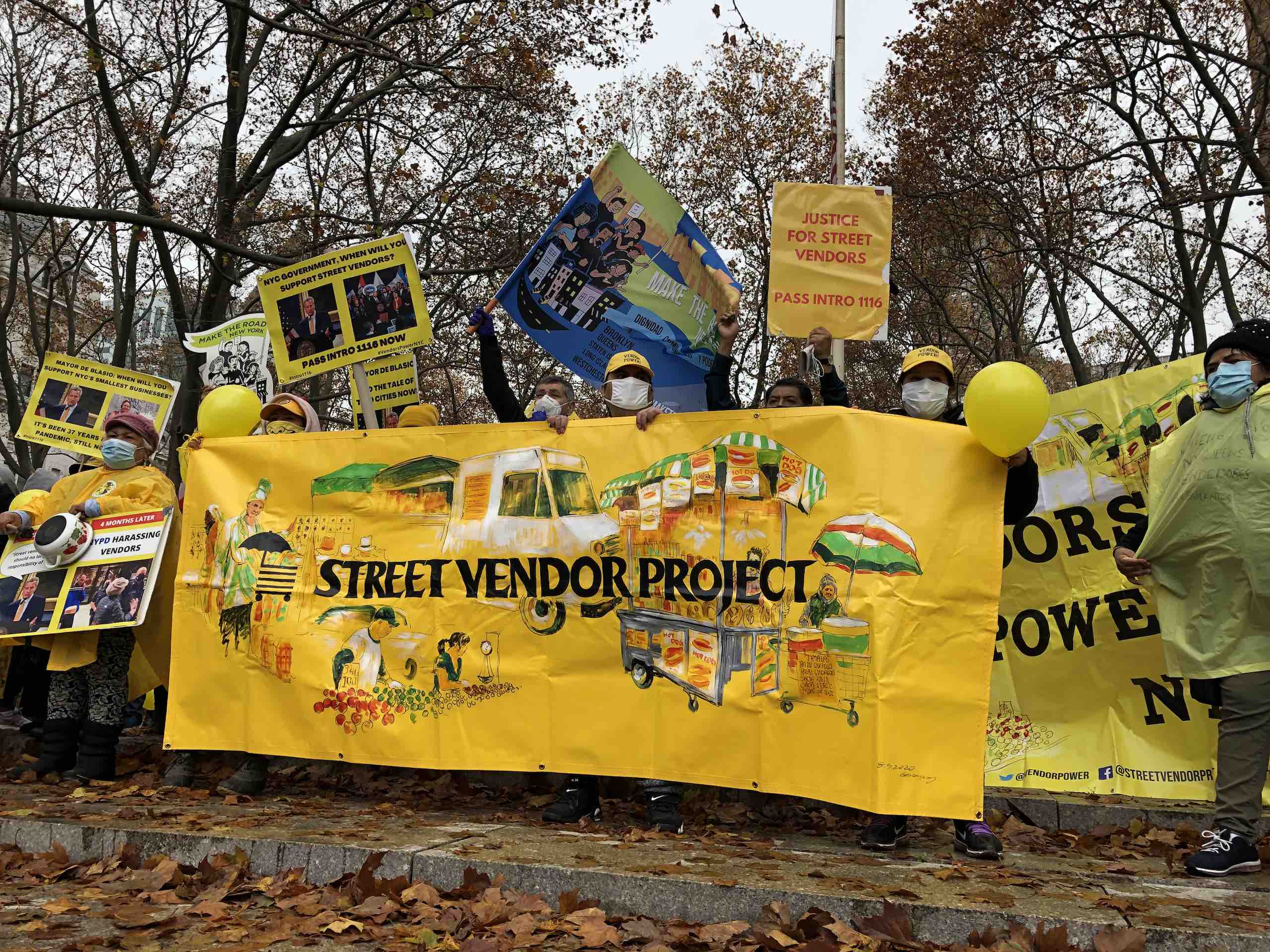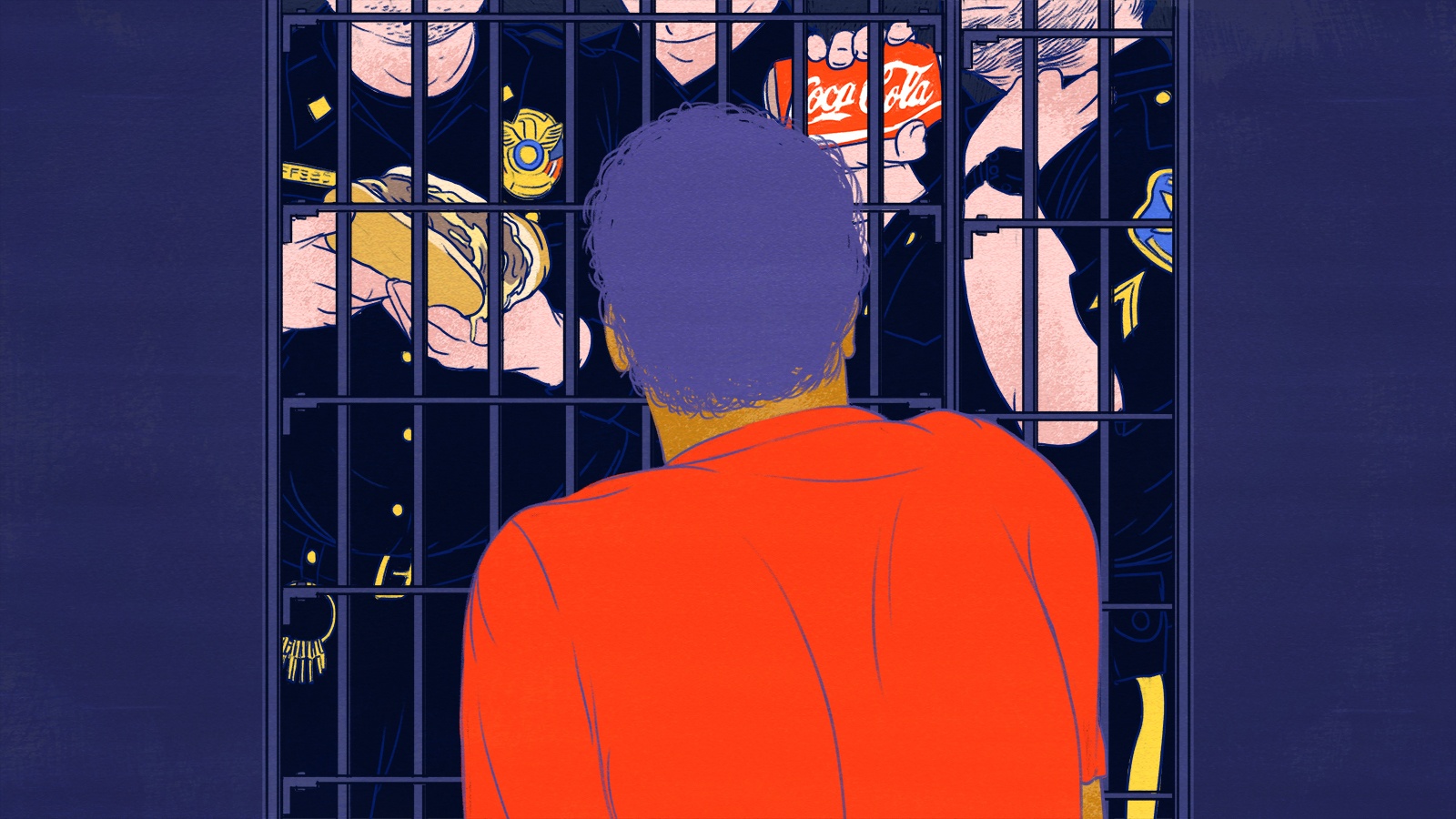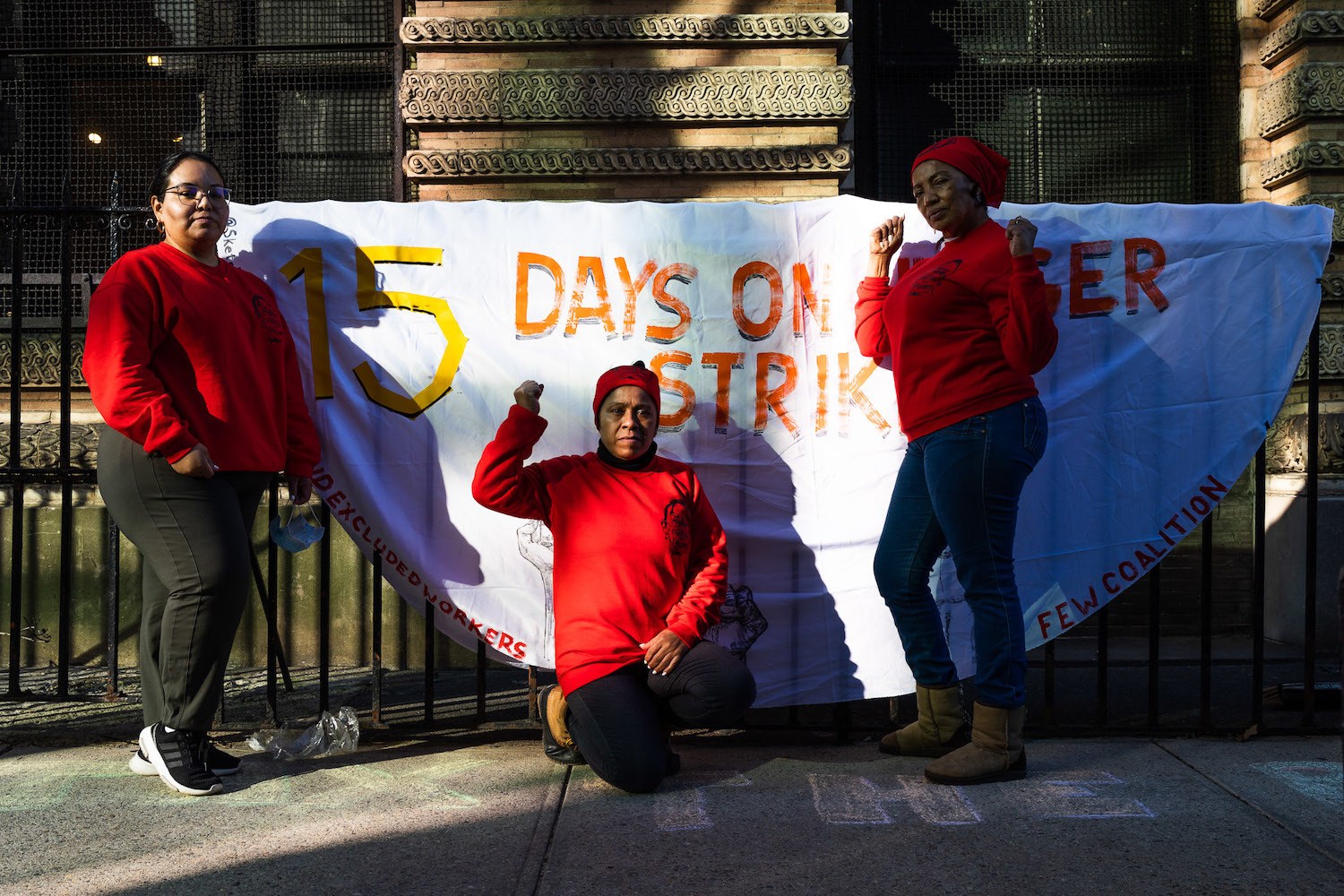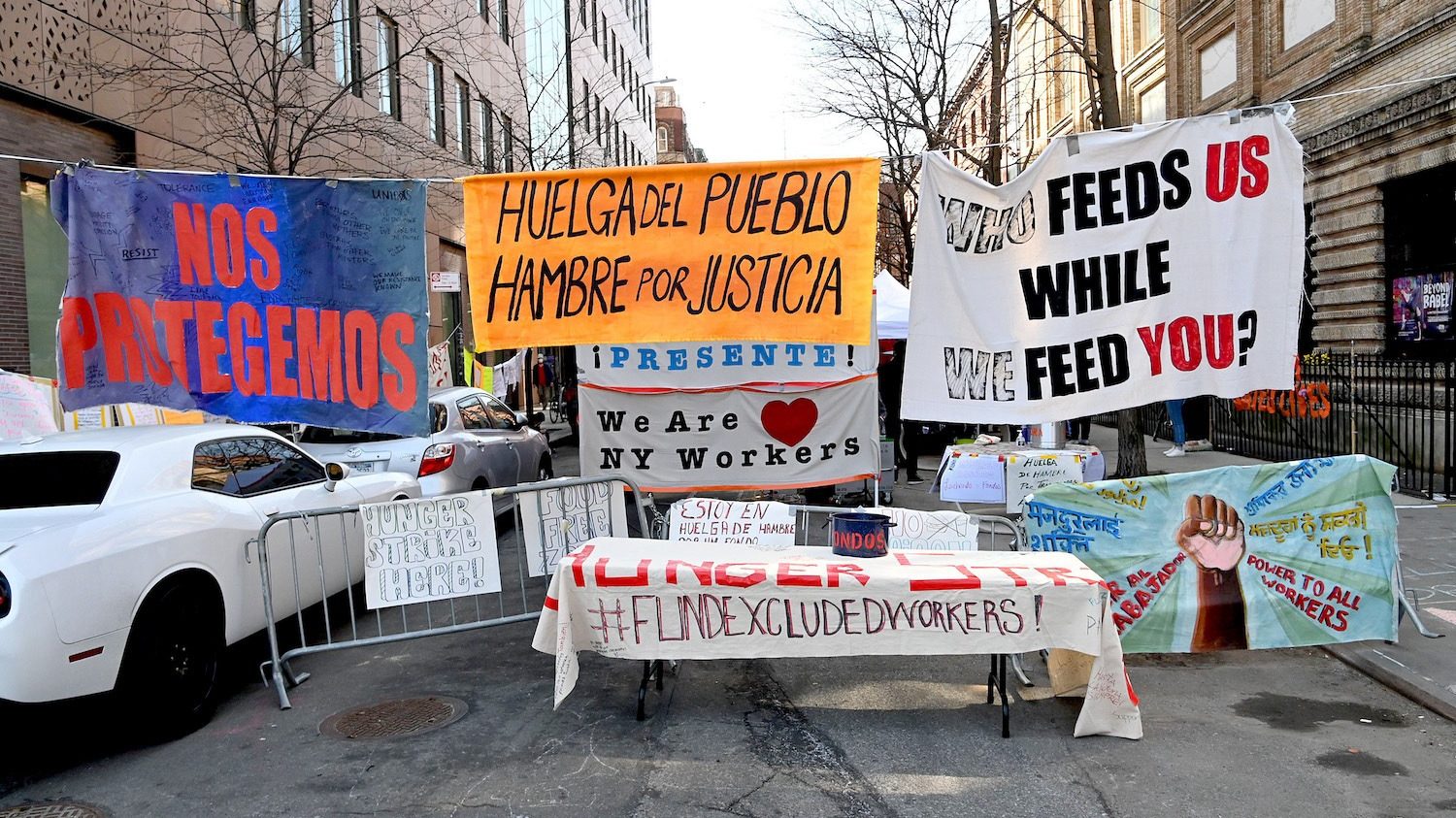
Jamie McCarthy/Getty Images
In April 2021, New York created a program to support workers who were otherwise ineligible for pandemic benefits. A new report assesses its successes and shortcomings.
Pictured above: In March 2021, workers and community allies in New York City entered the second week of a hunger strike for additional funding in the state budget for workers who have been excluded from federal and state aid during Covid-19.
Last spring, the New York state legislature set up a first-of-its-kind pandemic relief program, aimed at providing cash assistance to undocumented workers and other residents who were otherwise ineligible for traditional unemployment benefits. Now, less than a year after its creation, the material and social impacts of the initiative—known as the Excluded Workers Fund—are already coming into view.
According to a new report published by the Urban Institute, a think tank that focuses on social policy, the Excluded Workers Fund helped 130,000 undocumented New York state residents make up for lost income, meet basic needs, and put dinner on the table. Those who benefited from the program include many working in industries hard hit by stay-at-home orders—this includes food service, street vending, and farm work.
In the early months of the Covid-19 emergency, Congress took rapid steps to widen the social safety net by increasing weekly unemployment payments, expanding program eligibility to include self-employed workers, and issuing multiple stimulus checks. But those without work authorization, such as undocumented immigrants, were ineligible for many of these benefits. In New York, immigrant rights advocates called on lawmakers in Albany to set aside dedicated funding for such residents. Those efforts, including a weeks-long hunger strike that began almost exactly one year ago, led to the passage of a historic $2.1 billion Excluded Worker Fund last April.
“It was the lifesaver of my little household. It helped us get out of the hole we were in.”
The program provided a maximum benefit of $15,600 per worker, equivalent to six months of traditional pandemic unemployment benefits. The report’s authors found that the money helped families afford basic necessities.
“We did hear from people who said, ‘At one point, I didn’t really have anything in the refrigerator,’ or ‘Somebody loaned me money and I bought a bag of rice,’” said Elaine Waxman, senior fellow at Urban Institute and one of the report’s authors. “It really brings home how stark the food insecurity was at the early part of the pandemic.”
The report noted that without traditional pandemic relief, many undocumented workers took on loans in order to cover such expenses, as well as others like rent and utilities. Those who received support from the Excluded Workers Fund said the money helped pay those debts off.
“One of the biggest things that came out of this and that we heard from the workers is the sheer amount of debt and loans these workers had taken out just to get by throughout the pandemic,” said Poonam Gupta, a research analyst at Urban Institute and another of the report’s co-authors. “To me that is one of the most topline findings. They really used this fund to dig themselves out of hole that otherwise would have taken potentially years to dig out of without any relief.”
The report was based on surveys with 15 eligible workers, many of whom described the program as a lifeline for their families. One farm worker who received $15,600 told the authors that she was able to pay off money she’d borrowed from friends during the pandemic, and cover family grocery costs during months when she didn’t have income.
“It was the lifesaver of my little household,” another worker told the report’s authors. “It helped us get out of the hole we were in.”
However, the Excluded Workers Fund itself ultimately left a significant number of its targeted constituents shut out. The money was depleted within three months of its launch, and according to the New York State Department of Labor, approximately 95,000 applications are still pending.
Angeles Solis, director of worker organizing at Make the Road NY, a grassroots immigrants’ rights group, said that in addition to the queue of pending applications, there are likely tens of thousands more who couldn’t apply before the program was officially closed, due to difficulties securing paperwork or lack of outreach.
There are likely tens of thousands more who couldn’t apply before the program was officially closed, due to difficulties securing paperwork or lack of outreach.
In recent weeks, Solis, workers, and other advocates have taken actions to draw attention to the depleted fund and call for a replenishment. Last week, hundreds of delivery workers, street vendors, taxi drivers, construction workers rallied on the Brooklyn and Manhattan Bridges demanding that state lawmakers refill the Excluded Workers Fund so it can meet the needs of all residents eligible. They’re also calling for the creation of a permanent unemployment insurance program for workers excluded from traditional unemployment benefits.
“We need to move away from relief and relief every year and move toward full inclusion of these workers in the social safety net,” Solis said.
Whether or not there’s enough political will to meet either of those demands remains to be seen. As one lawmaker who sponsored the legislation told The City, Excluded Worker Fund proposals face more resistance right now, compared with last spring—a time when vaccines were not yet widely available and many Covid-19 restrictions were still in place.
But as the authors of Thursday’s report pointed out—even if the state is moving on from the pandemic, many workers are still reeling from it. All but one of the workers interviewed said they are working reduced hours, or as little as two days per week, due to slow economic recovery.
“It’s a lot of money, don’t get me wrong,” said one worker quoted in the report who had received assistance. “But it goes fast.”

